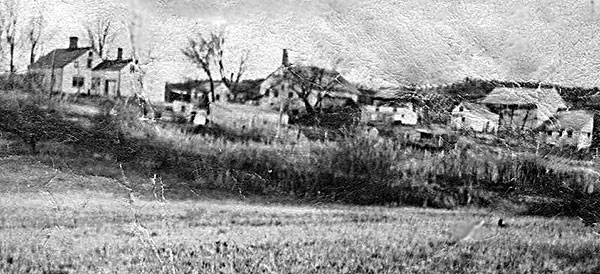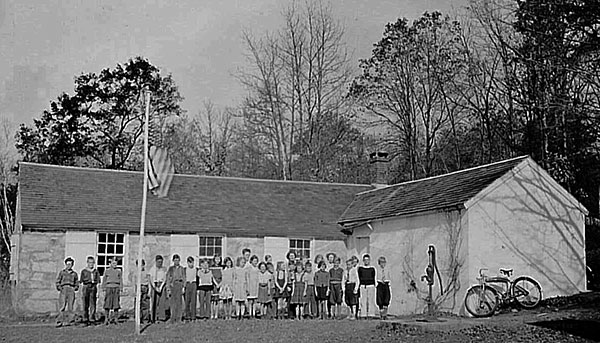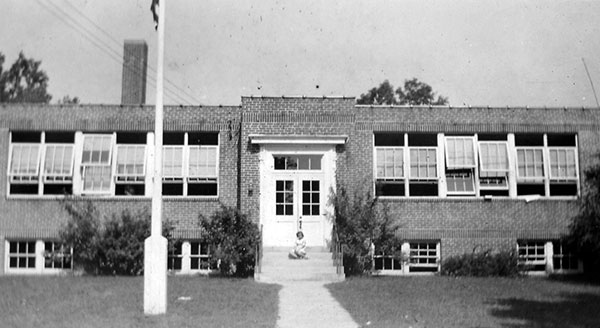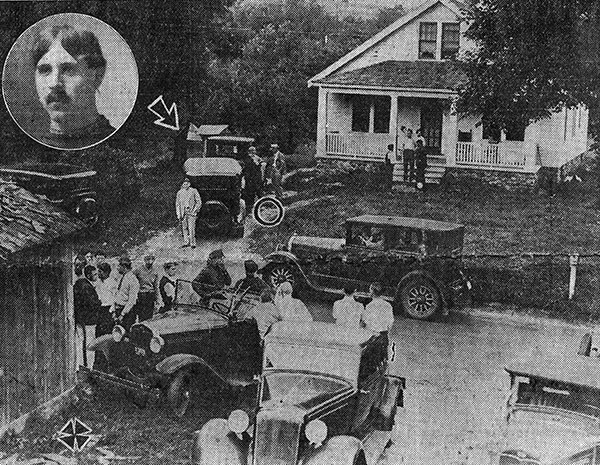|
|
||||||||||||
 |
 |
|
Wolcott Historical Society History for October 2013 By Florence Goodman I always enjoy interviewing longtime residents of our town; their experiences of growing up in Wolcott greatly enhance my historical database. Last month, I met with Jean and Tony Bosco, who have lived in Wolcott most of their lives since the 1930s. I will share some of their stories with you.
Jean Sanford Bosco and her husband Tony spent most of their early years in the western section of Wolcott on Spindle Hill Road. Jean's family lived at the bottom of Spindle Hill Road in the Chestnut Hill Reservoir area and Tony's family lived in the northern section in the Clinton Hill area. Tony's grandparents, Mr. & Mrs. Walaitis, owned a 49-acre farm that bordered the Andrews and Provost farms near the intersection of Spindle Hill, Andrews and Clinton Hill Roads down to the Wakelee School area. Tony and his family lived with his grandparents from 1934 to 1937 in a house that is no longer standing, but it was located on the corner of Andrews and Clinton Hill Roads. The Walaitis farm was a sustenance farm like most of the early farms found in Wolcott. They grew crops for the family's meals and raised pigs, cows and horses. They also picked wild blueberries and mushrooms found on the land. Tony remembers several interesting things that happened while they lived there. One was that in 1934, John Crowe, who murdered two people on Wolcott Road, stopped by their house and asked his grandmother for money to leave town. At the time they did not know what he had done and his grandmother had no money to give him, but packed up a bag of food for his trip. Another interesting memory was that in 1936, Tony's uncle attended the West School just down the road from their house. The teacher was Miss Hunt.
In the late 1930s, Tony's father got a job in Waterbury at American Brass so the family left Wolcott, but they quickly returned in 1941. His parents purchased land, a house and a restaurant on Wolcott Road. The house was behind the restaurant that was called LeeTon's (his parents were Lee and Tony). This is the same building where the Treehouse Restaurant is today. In 1950, Tony went into the service and his parents leased the restaurant to Frank Manzo for ten years. Frank, better known as Pop, was my mother's brother and I remember my father taking us to that restaurant when I was a kid. Sometime later the house behind the restaurant burned down and Tony's family moved to 419 Bound Line Road.
Jean's family lived in a three family house that was set back at the bottom of Spindle Hill Road; this house was taken down some time ago and was replaced by a new structure. Across the street was another three family house, which is still standing. It belonged to the DiGiacomo family.
There was a pond on the right hand side of the road just south of Jean's house; it was called Icehouse Pond. Jean and Tony both remember when that icehouse was located next to the pond. They would watch as the men cut the ice and hauled it up to the icehouse using an elevator system to move the ice. They would put hay on the ice to keep it from melting. This worked well and the ice stayed frozen all summer long.
Across the road from the icehouse was a dirt road; it lead to Chestnut Hill Reservoir or Arrowhead. This area was referred to as Arrowhead because of all the arrowheads that were found there. The neighborhood kids would use this road to walk down to the reservoir to swim in the summer and skate in the winter.
Jean also talked about their winter fun, which included sliding down Spindle Hill Road. The kids would start at the top of the road near the intersection of Clinton Hill and Andrews Roads and slide all they way down to the reservoir. They had lookouts positioned along the road to warn each other if a car might try to come up the hill, but when there was a lot of snow no one attempted that.
Jean and Tony also mention that in 1946 Northeast Transportation was the bus company used to transport children to school. In the winter, their bus driver, Fonzie, would use Spindle Hill Road to decide if there was school or not. If he could not make it up the hill, school was cancelled. Jean attended the old stone Woodtick School in the early 1940s after they had built the new two-room Woodtick School. There had been an influx of school age children and they were on double session and still did not have enough room so they reopened the old stone Woodtick School. There was no electricity or indoor plumbing and on cloudy days it was almost impossible to see without lights. Schools have definitely improved since then.
After listening to Jean and Tony's stories it is obvious that Wolcott has changed drastically over the past 70 years. If you have some interesting stories to tell about growing up in our town, please feel free to share them; I'd love to hear from you.
(Information for this article was taken from an interview with Jean and Tony Bosco, Wolcott, Connecticut in August 2013.)
To the far left is the Obed Alcott House and to the right of that is the Provost Farm on Spindle Hill Road and Rustic Acres. This picture was taken in the early 1900s.
Stone Schoolhouse circa late 1930s or early 1940s.
The new two-room Woodtick School with indoor plumbing and heat replaced the old stone schoolhouse.
Yuskis home on Wolcott Road, where Rite Aid is today. John Crowe, pictured in upper right hand corner, murdered two people here in 1934.
To view past installments of the Wolcott Historical Society News, click here.
|
|
|
[Home]
[News]
[Purpose]
[Calendar]
[Museum]
[Membership]
[History]
[Contacts]
[Links]
All material at Wolcott Historical Society Web sites Copyright © 2000-2013 Wolcott Historical Society |



